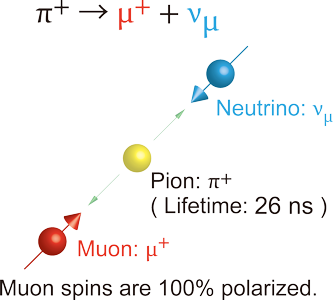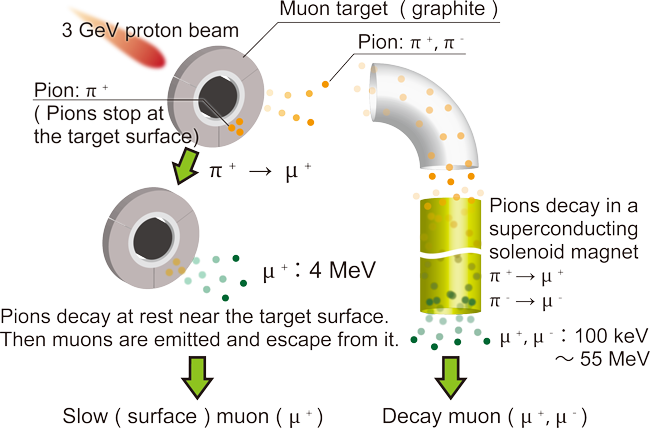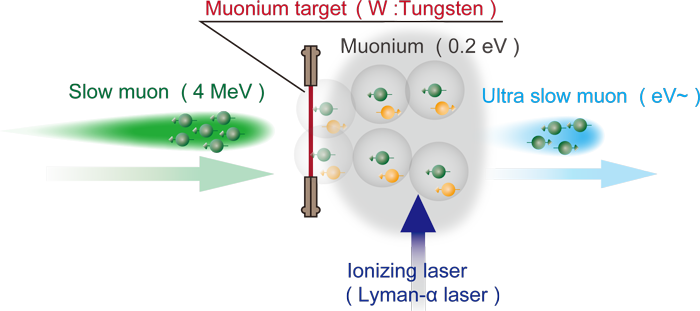About muon
The muon (μ) is an unstable elementary particle classified as a lepton and similar to the electron. It is born from the decay of a pion (π), has a positive or negative electric charge, and a mass about 1/9 of a proton or about 200 times larger than an electron. The positive muon decays into a positron and two neutrinos with a mean lifetime of 2.2 μs, and selectively emits the positron in the direction of the muon spin due to the weak interaction.


Muon generation
At J-PARC, a proton beam accelerated to 3 GeV by a synchrotron accelerator is irradiated onto a muon target made of graphite. When a proton and a carbon nucleus collide with each other, a spallation reaction occurs and a pion is generated. The pion decays with a mean lifetime of 26 ns, and in turn generates a muon and a neutrino (ν).
The pions (π+, π-) that escape from the muon target are collected in a superconducting solenoid magnet where they decay into muons (μ+, μ-). On the other hand, pions (π+) that stop and decay at rest near the target surface emit muons (μ+) with a maximum energy of 4 MeV. Because stopped negative pions are captured by nuclei, negative slow (surface) muons can not be produced.

Ultra slow muon
Ultra slow muons are generated by stopping slow muons pulled out from an accelerator on a target to produce muonium (Mu) atoms that are in turn irradiated with an ionizing laser (resonant ionization dissociation method) to strip off electrons. Since the energy of generated Mu is lowered to about 0.2 eV (target thermal energy), the muon obtained by reconversion has an ultra-low energy and is thus called "ultra slow muon".

